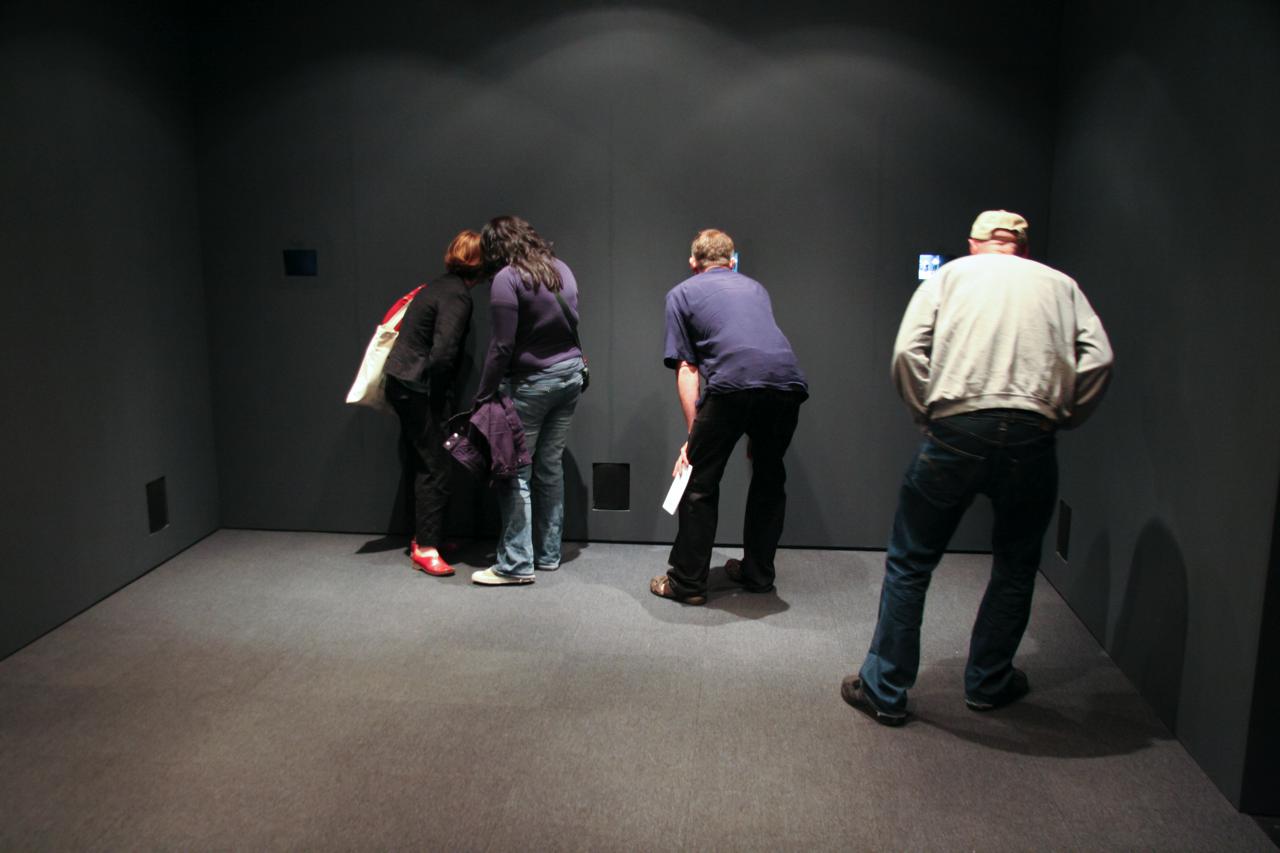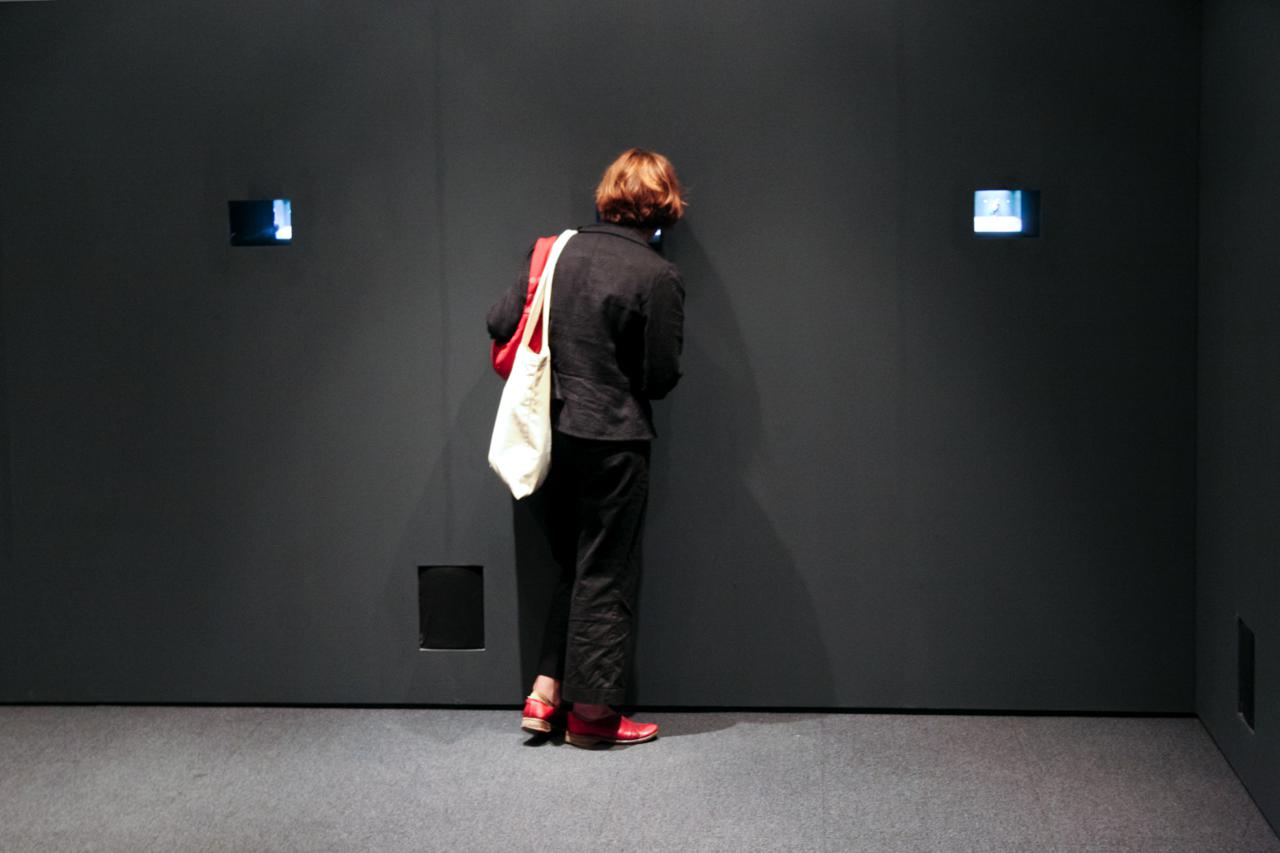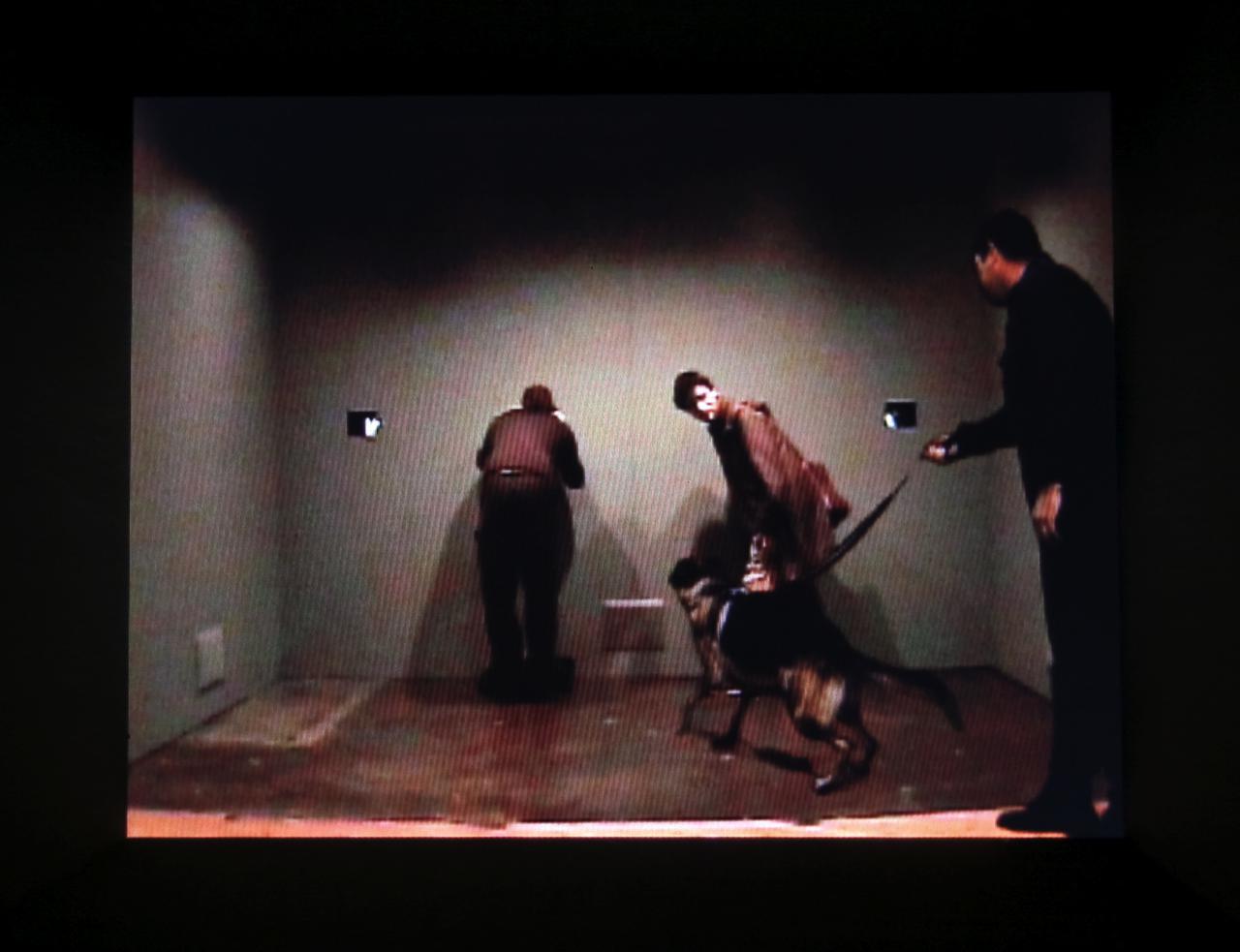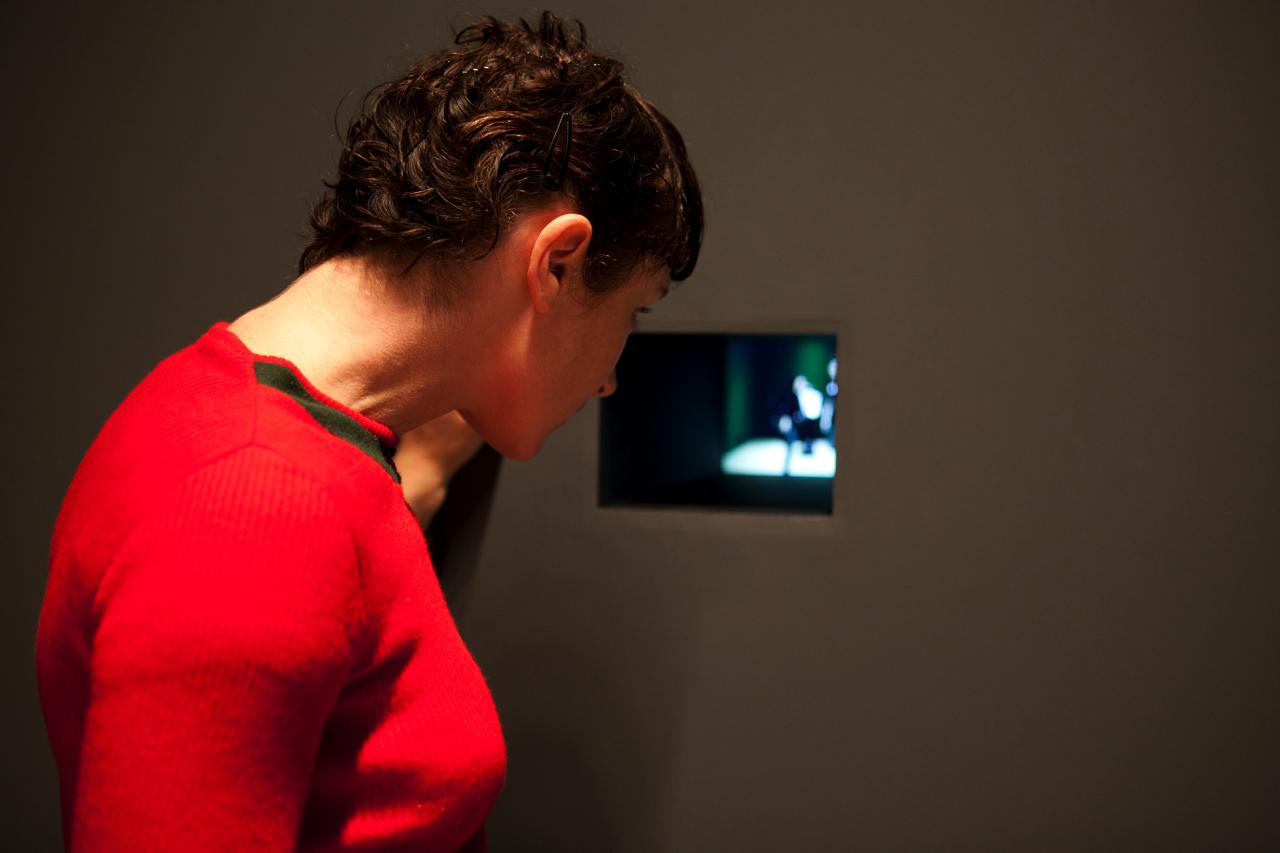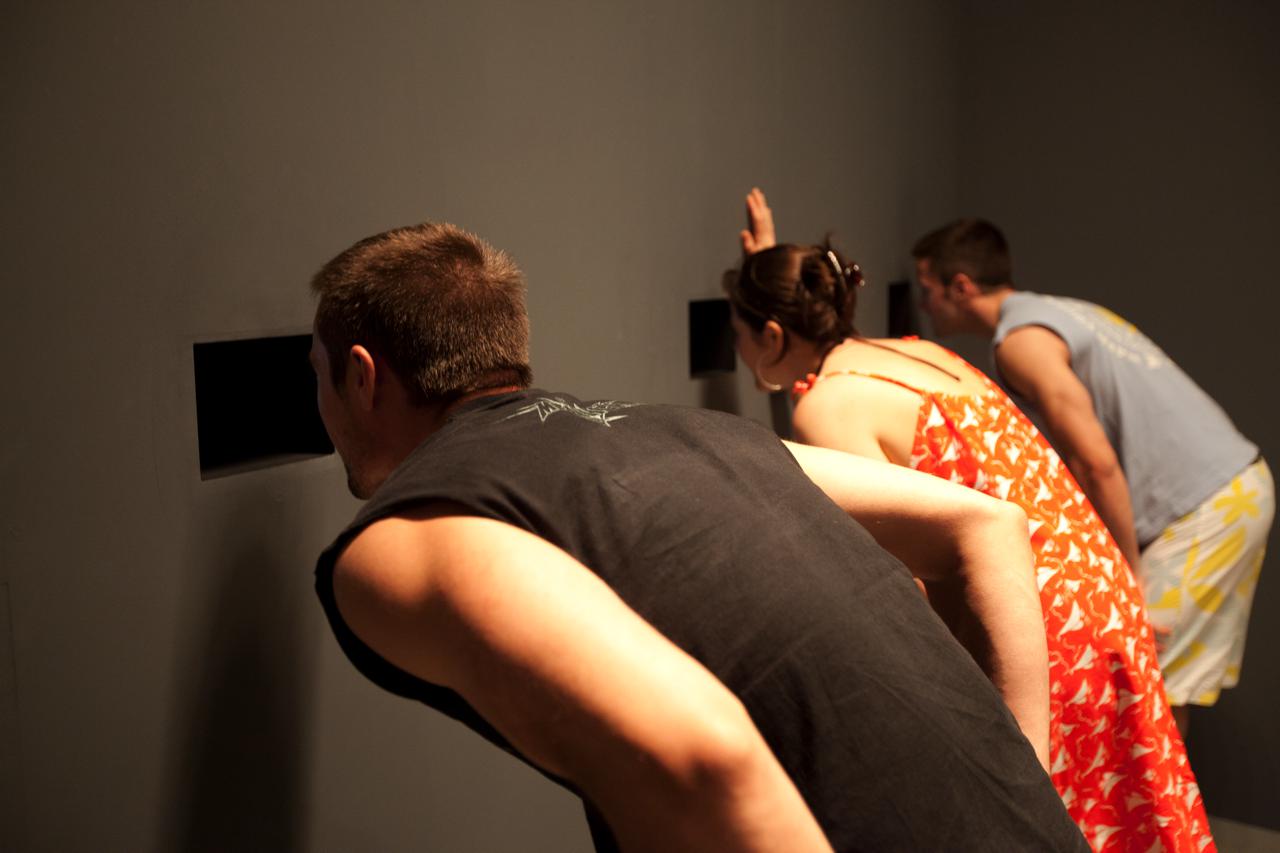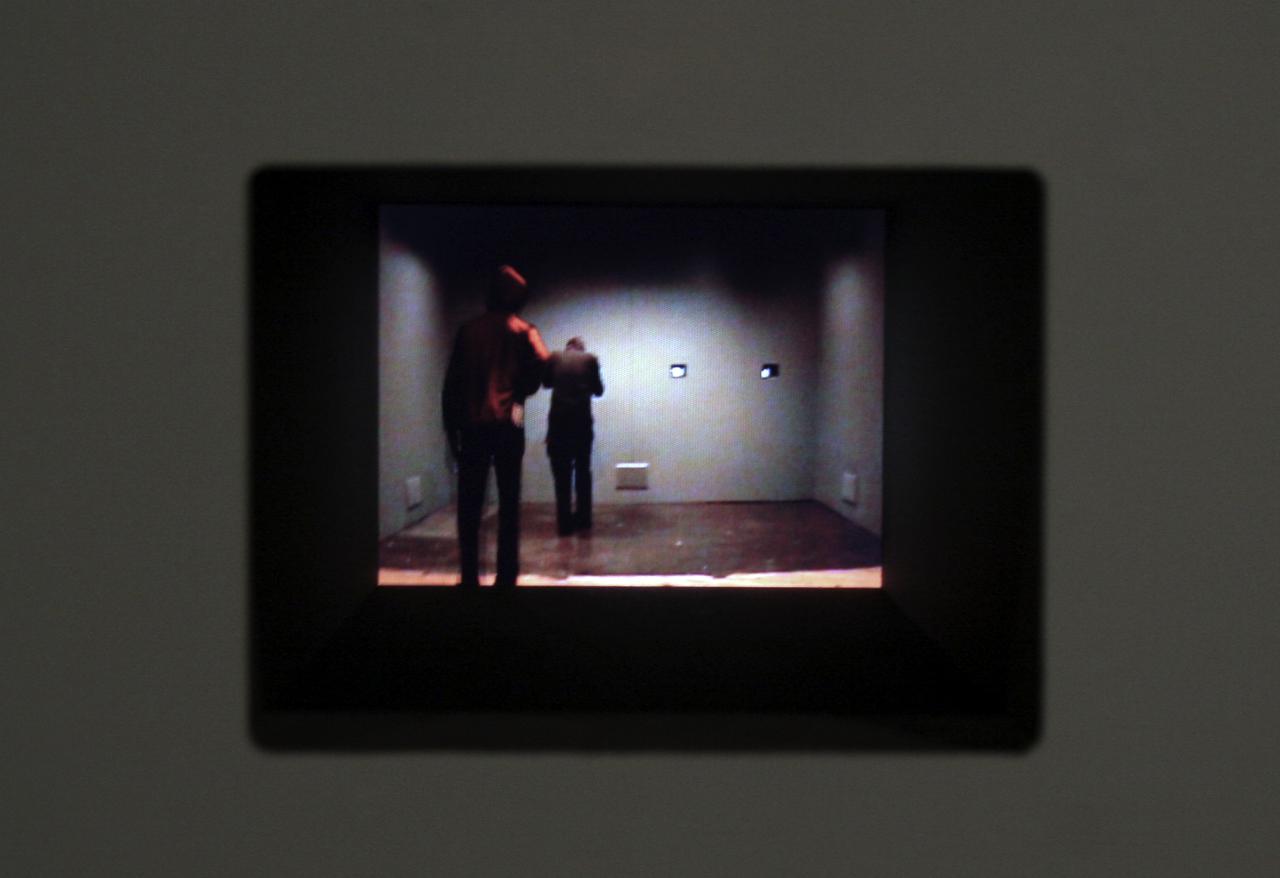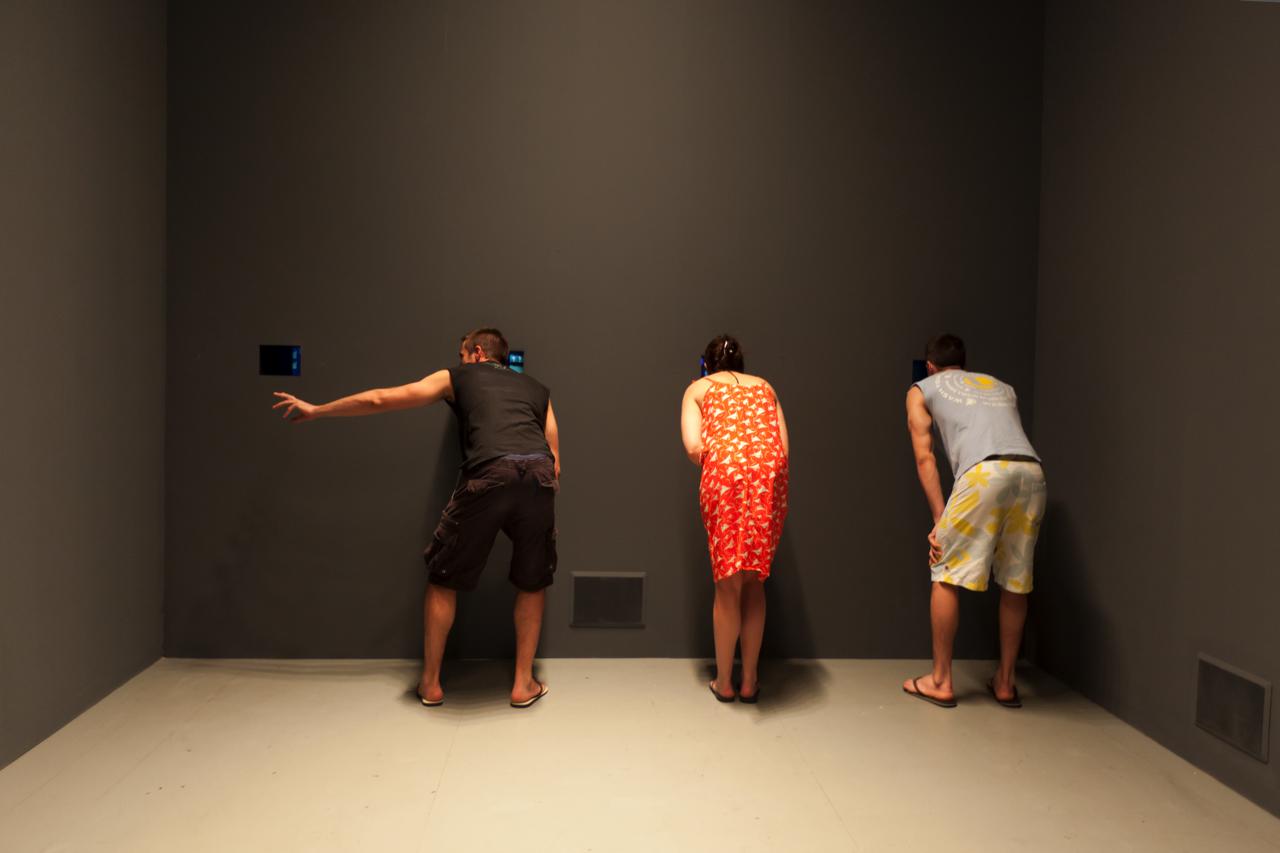Dislocation
Dislocation is an interactive installation in which perceptually real virtual characters intermingle with exhibition audiences. As audience members peer into their chosen portals, real-time video, audio and locational data are employed to create the illusion of additional characters (humans) inhabiting the space.
‘In Dislocation, real time video images of the audience are captured and then digitally composited with images of pre-recorded video characters.
The audience enters an empty gallery room where there are four individual portals set into one of the walls. As you look through a portal you see what appears to be simple closed-circuit video feed of the gallery room you are in including your own image seen from behind looking into one of the portals.
The auto-voyeurism of watching your own image is given an uncanny and disturbing twist when you also become the unwitting observer of a number of different scenarios that are apparently being played out in the room behind you. As you watch though the portal, you may see a man enter the room and walk up behind you or a young couple come into the room and start kissing, or a security guard enters with a barking dog. This uncanny sense of bodily presence behind you and your own
possible vulnerability to these presences induces you to turn around to look behind you but when you do you are confronted with an empty room.
The real and the virtual seamlessly merge in the video image that the audience participants see through the individual portals. Indeed, once the audience’s image is digitally captured it too becomes virtualised. The work plays with notions of appearance and reality, the ‘real’ indexical images of the audience and the pre-recorded phantom video characters occupy the same viewing plane, their apparent reality only shown to be false when the audience member turns around to confront an empty space where they expect to see the virtual character. The simultaneous presence and absence of these digital phantoms sets up an uncanny simulated hyperreality where you cannot trust the evidence of your own eyes. The hyperreal fabrication of the digital image subverts the traditional ‘seeing is believing’ ethos of traditional video.’
Cleland, K. (2006). Media Mirrors and Image Avatars. Engage: Interaction, Art and Audience Experience (2006), a CCS/ACID Symposium, Broadway NSW: Creativity and Cognition Studios Press, University of Technology Sydney.
Exhibitions
- Wonderland, Museum of Contemporary Art, Taipei, Taiwan, 2012
- Trace Elements, Perfomance Space, Sydney, Australia, 2009
- Trace Elements, Tokyo Opera City Art Gallery, Tokyo, Japan, 2008
- Mirror States, Campbelltown Arts Centre, Sydney Australia, 2008
- Under the Radar, FACT Liverpool United Kingdom, 2006
- Vanishing Point, Melbourne Australia, 2005
Credits
- This projects was comissioned by Experimenta Media Arts.
- Thanks to: Ali Crosby, Luke Dearnly, Gotaro Uematsu, Michaela Davies, Nick Halmagyi.
- Performers: Lenka Kripac, Brad Miller, John Tonkin, Emma Price, Jameson King, Brother Bill, James Hancock, Josephine Starrs, Leon Cmielewski, Sierra Bell, Swerve.
